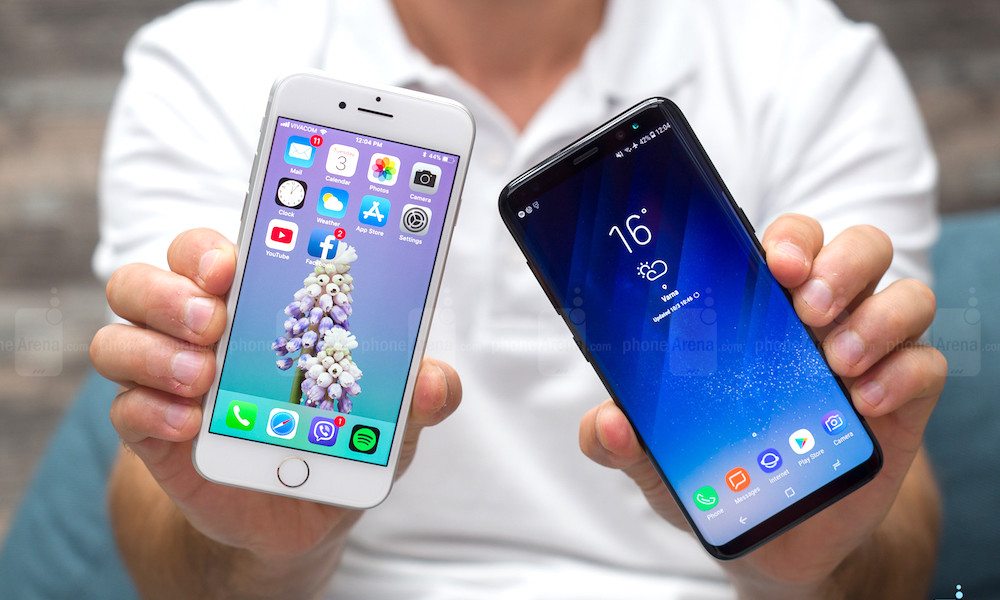Apple Overtook Samsung as World’s No. 1 Smartphone Vendor in 2017
 Credit: PhoneArena
Credit: PhoneArena
Toggle Dark Mode
Apple revealed last week that its fiscal fourth quarter (Q4) of 2017 was yet another record smasher during which the company generated over $88 billion in revenue — driven in part by the 77.3 million iPhones it sold during the three-month period ending December 30, 2017.
Interestingly, while that otherwise whopping sum is about 1.3 percent less than the 78.3 million iPhones Apple sold during Q4, 2016, the company’s nominal gains in marketshare (up to 19.2 percent) were significant enough to push it ahead of rivals Samsung, Huawei, and all others vendors combined to clinch the No. 1 slot, according to the latest IDC analysis.
Breaking Down the Data
The worldwide smartphone market saw an overall decline of 6.3 percent during Q4, 2017 — dropping from the 430.7 million units shipped in Q4, 2016, down to the 403.5 million shipped in Q4, 2017, according to IDC’s proprietary Worldwide Quarterly Mobile Phone Tracker.
Amid the decline, Apple’s surprising gain of about 1 percent marketshare (relative to its share in Q4, 2016) was significant enough to push it ahead of Samsung for Q4 — even though the South Korean company maintained its overall position as the world’s No. 1 vendor, by volume, throughout 2017, IDC said.
Overall, Samsung shipped 74.1 million smartphones during Q4 2017, which is down roughly 4.4 percent relative to the 77.5 million it shipped during Q4, 2016.
Additionally, the data reveals that Huawei retained its position as No. 3 during Q4, 2017 — though the Chinese handset maker’s share dipped 0.3 points relative to its Q4, 2016 marketshare. This is particularly interesting considering how IDC’s data from earlier in 2017 suggested that Huawei was moving closer to overtaking Apple.
Following Huawei, meanwhile, are No. 4 and No. 5 — fellow Chinese handset maker’s Xiaomi and Oppo, whose marketshares during Q4, 2017 registered 7 percent and 6.8 percent, respectively.
All other smartphone vendors, collectively, accounted for the remaining 38.6 percent of marketshare — or 151.3 million of the 403.5 million smartphones sold during Q4, 2017.
Why the Decline?
Echoing the sentiments of those cited in other, previous analyses, IDC confirmed that “developed markets” such as China and the U.S. experienced a sizable decline in smartphone sales during Q4, 2017, citing what appears to have been an overall lack of interest in upgrading to the latest, greatest and most powerful devices.
“The latest flock of posh flagships may have had consumers hitting the pause button in the holiday quarter,” said IDC’s research manager of mobile phones, Anthony Scarsella, who added that “With ultra-high-end flagships all the rage in 2017, many of these new bezel-less wonders proved to be more of a luxury than a necessity among upgraders.”
Meanwhile, IDC’s senior research analyst, Jitesh Ubrani, appeared to back up his colleague’s talking points, suggesting that “In the presence of ultra-high-end flagships,” already high-priced smartphone offerings from the previous year “seemed far more palatable to consumers in 2017.”
2018 or Bust?
While Apple may have managed to knock Samsung from its perch during Q4, 2017, worth noting is that based on our burgeoning knowledge of what the smartphone industry has in store for the year ahead, these figures are all but certain to move around as we move forward — especially with both Apple and Samsung expected to release multiple, high-end flagships in the months ahead.






